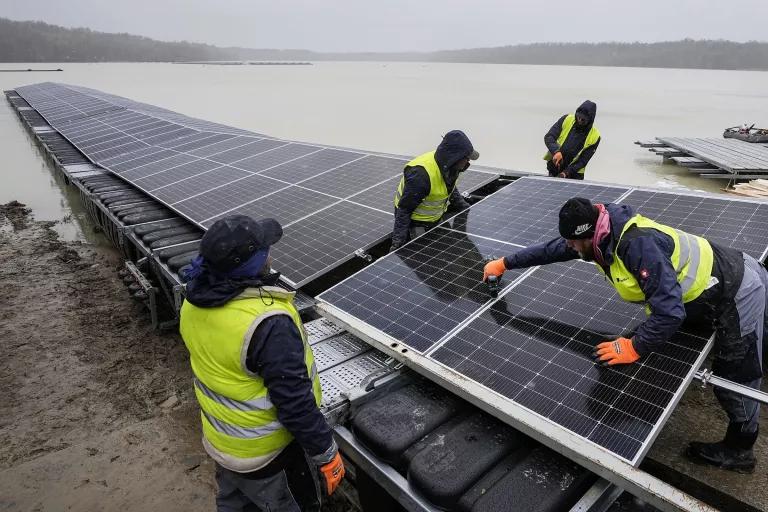Effects of Climate Change on the Environment
The first wave of impacts can already be felt in our communities and seen on the nightly news. In the near future, between 2030 and 2050, climate change is expected to cause an additional 250,000 deaths per year from things like malnutrition, insect-borne diseases, and heat stress. And the World Bank estimates that climate change could displace more than 140 million people within their home countries in sub-Saharan Africa, South Asia, and Latin America by 2050.
But the degree to which the climate crisis upends our lives depends on whether global leaders decide to chart a different course. If we fail to curb greenhouse gas emissions, scientists predict a catastrophic 4.3 degrees Celsius, (or around 8 degrees Fahrenheit) of warming by the end of the century. What would a world that warm look like? Wars over water. Crowded hospitals to contend with spreading disease. Collapsed fisheries. Dead coral reefs. Even more lethal heat waves. These are just some of the impacts predicted by climate scientists.

Solar panel installation at a floating photovoltaic plant on a lake in Haltern am See, Germany, April 2022
Martin Meissner/AP Photo
Climate mitigation, or our ability to reverse climate change and undo its widespread effects, hinges on the successful enactment of policies that yield deep cuts to carbon pollution, end our dependence on dangerous fossil fuels and the deadly air pollution they generate, and prioritize the people and ecosystems on the frontlines. And these actions must be taken quickly in order to ensure a healthier present day and future. In one of its latest reports, the IPCC presented its most optimistic emissions scenario, in which the world only briefly surpasses 1.5 degrees of warming but sequestration measures cause it to dip back below by 2100. Climate adaptation, a term that refers to coping with climate impacts, is no longer optional; it’s necessary, particularly for the world’s most vulnerable populations.
By following the urgent warnings of the IPCC and limiting warming, we may be able to avoid passing some of the critical thresholds that, once crossed, can lead to potentially irreversible, catastrophic impacts for the planet, including more warming. These thresholds are known as climate tipping points and refer to when a natural system "tips" into an entirely different state. One example would be Arctic permafrost, which stores carbon like a freezer: As the permafrost melts from warming temperatures, it releases carbon dioxide into the atmosphere.
Importantly, climate action is not a binary pass-fail test. Every fraction of a degree of warming that we prevent will reduce human suffering and death, and keep more of the planet’s natural systems intact. The good news is that a wide range of solutions exist to sharply reduce emissions, slow the pace of warming, and protect communities on the frontlines of climate impacts. Climate leaders the world over—those on major political stages as well as grassroots community activists—are offering up alternative models to systems that prioritize polluters over people. Many of these solutions are rooted in ancestral and Indigenous understandings of the natural world and have existed for millennia. Some solutions require major investments into clean, renewable energy and sustainable technologies. To be successful, climate solutions must also address intersecting crises—like poverty, racism, and gender inequality—that compound and drive the causes and impacts of the climate crisis. A combination of human ingenuity and immense political will can help us get there.
Comments
Post a Comment